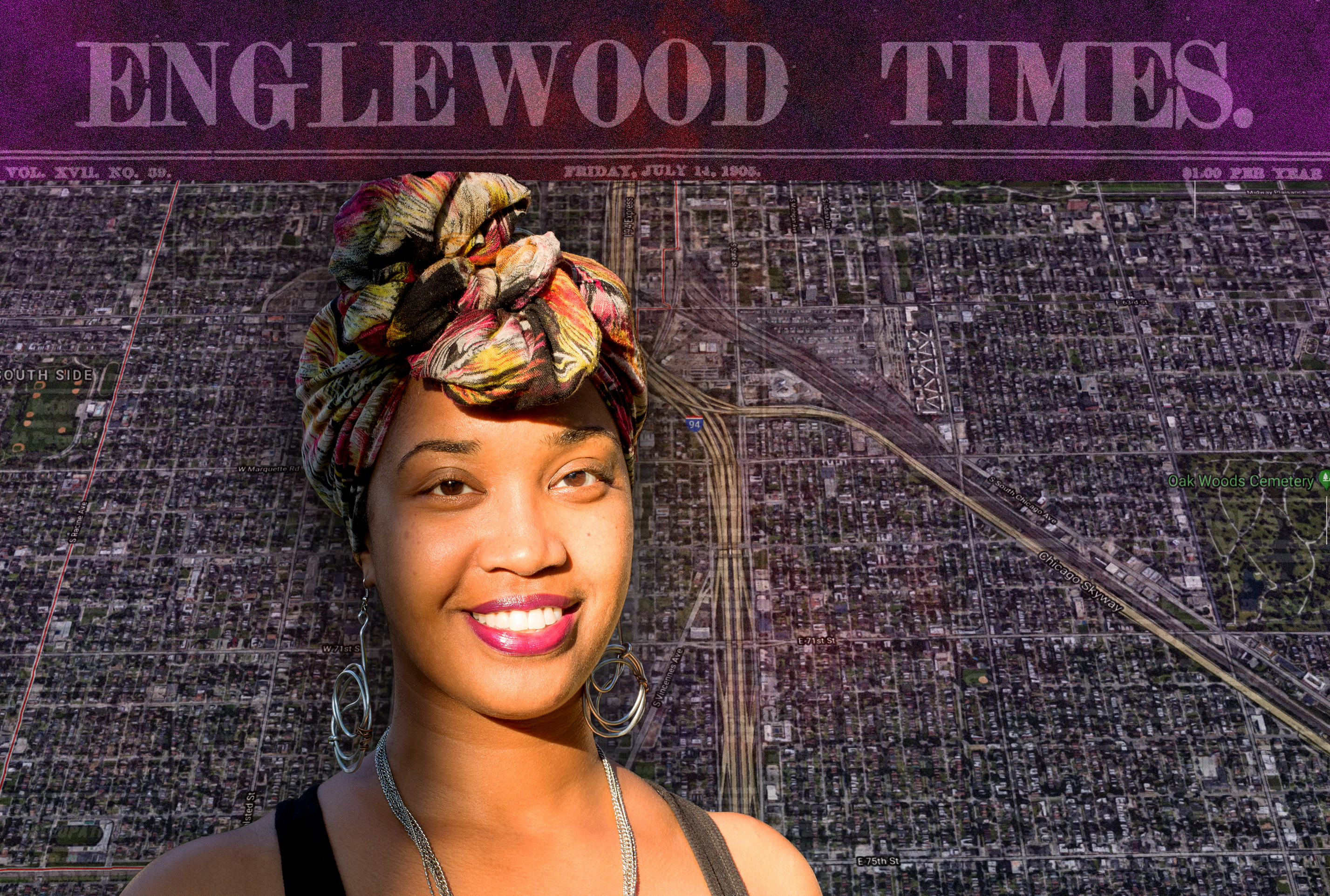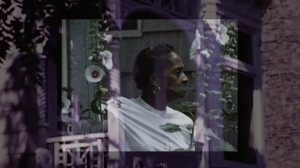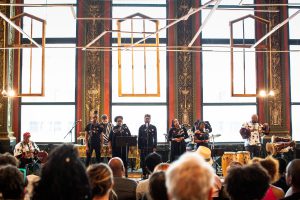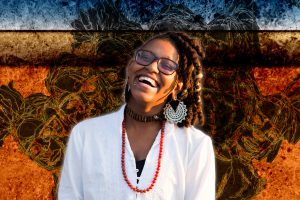Tonika G. Johnson (she/her) is an Englewood photographer and activist who uses photography and digital media to explore Chicago’s racial and economic disparities. She harnesses the provocative power of photographs and moving image in her latest project Folded Map, where she looks specifically at issues of segregation and housing by juxtaposing images of streets on Chicago’s South Side with their sister addresses on the North Side. The stark difference in the care of buildings, houses, and streets between the two locations is jarring and visually unsettling. The omnipresent nature of structural racism and systemic oppression has never been clearer. But Johnson does more than show these disparities. She creates a bridge and creates space for North and South Side residents to come together and discuss how segregation impacts their lives. In doing so, Johnson urges the Chicago public to continue to have these difficult conversations.
I have been an admirer of Johnson’s work since Everyday Rituals, her multimedia project that “asserts the divinity of regular people.” She captures her community with loving precision and pride. Each image holds a special type of tenderness that’s not often associated with snap judgments or media reports about Englewood. Her work is not only a love letter to Englewood but a necessary disruption of the harmful images of Black life in Chicago.
This article was edited for length and clarity.
Ireashia Bennett: So, finally, we meet! [Tonika and Ireashia laugh] You were one of the first to come to mind in terms of using photography as a tool [and] demonstrating to the world and visualizing what segregation looks like, what systemic violence looks like in very stark ways.
Tonika G. Johnson: Oh, thank you! And you said it so eloquently. I’m like, “Oh she talks like a grant application.” [Tonika and Ireashia laugh] That is wonderful.
Ireashia: Buzzwords! [Ireashia and Tonika laugh] I’m really interested in how you came to photography. Was it your first love? Or, were there other things before photography?
Tonika: Really, it was poetry. Probably because I’d be around my mom all the time and she’s a writer and a poet. I was that kid that was dragged along to her screenwriting meeting. She was in a group that was eventually called “Black Screenwriters Association.” They met all the time talking about writing and screenplays and so I was immersed in that. So I started writing. Then, I got serious about poetry–as serious as an 8th grader can get. My friend that I was in school with told me about a program that was new–Young Chicago Authors. She was like, “You know you can get scholarships for each year of college. You should go! I’ll do it with you!” So we started Young Chicago Authors. Every Saturday, we had to go all year ’round. It was in the Young Chicago Authors program that they introduced other mediums. They offered photography.
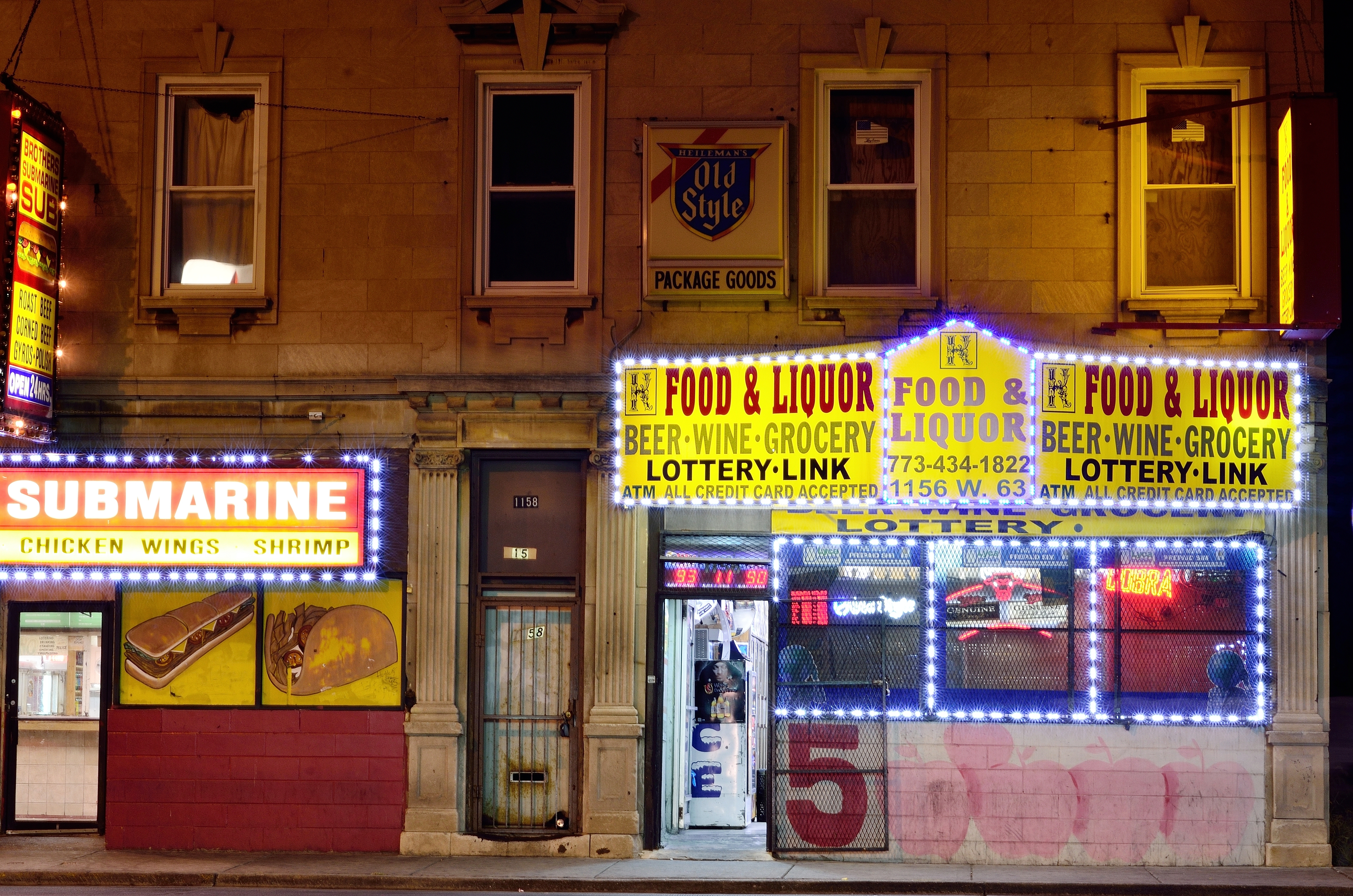
Ireashia: Oh, wow!
Tonika: I took the photography class because I was always interested in it. My dad was a camera fanatic. When I say “camera,” not the equipment but [he] always took pictures. So I was used to seeing myself and seeing pictures of my family members and I personally knew the value of it. I took photography the summer going into freshman year. This was ’93 and I’ve been hooked ever since.
Ireashia: What makes you stay with photography?
Tonika: Because I just see everything in photos. [Tonika laughs] I used to joke and say that if I had a camera in my eye, that would be perfect. I could blink and take a picture. I just always see photography. I always see images, I always see moments.
Even in my twenties when I was a new wife, a new mother and I had what I call [a] little sabbatical from photography. It was like, six years I didn’t take photos. I literally thought about it every day of those six years. I was bothering and annoying my husband at the time so much about not taking photos that he was like “you know what, we just need to budget for it and get you a damn camera ’cause you keep talking about it so much.” He got me a camera as a birthday gift–my first digital camera. I just started taking pictures in the neighborhood with my new camera.
I eventually met Asiaha Butler, the lead co-founder of R.A.G.E. [Resident Association of Greater Englewood], and I got really immersed in community work, which enabled me to really want to document Englewood completely. When I started doing community work my fellow community members started telling me how they valued my photography. They were the ones that [said], “No, these are valuable. These are the images we wished people would see of our community. And you have ’em!”
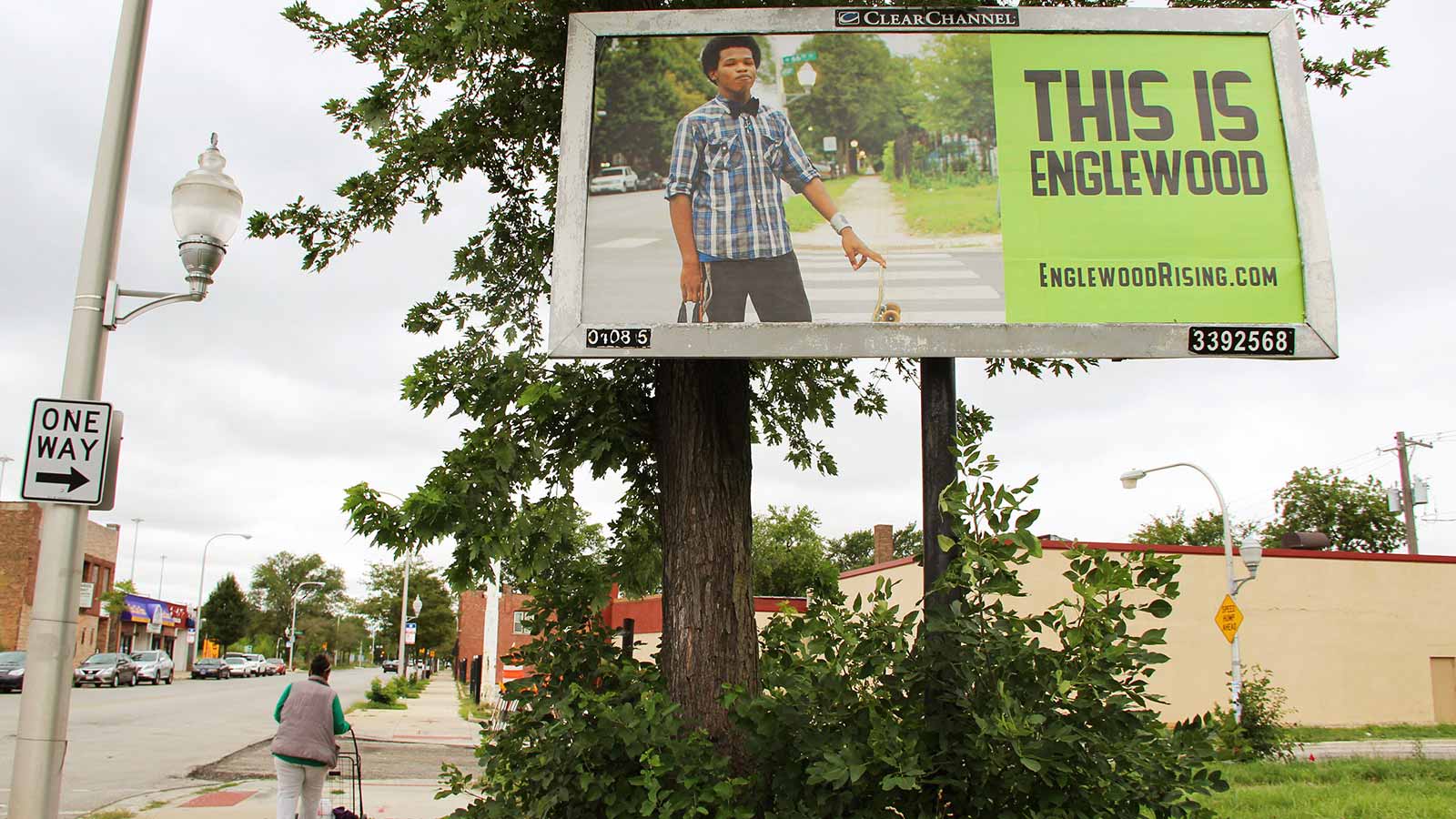
That led to us eventually doing that Englewood billboard campaign where we raised funds to purchase five billboards in Englewood for 9-10 months. We did that project primarily for us residents to instill pride, hope–all of that. It wasn’t until the success of that billboard campaign that I was like, “Look at what art can do!” I mean, I had known it–but to experience it and be a part of it is a completely different thing. Now, I really do see photography as a huge tool to help people shift their mindset and reclaim narratives on how their communities are viewed and how others view it. It also spreads truth.
Ireashia: Yeah! Your work reminds me of the work that was happening during the Civil Rights Movement and also in the Chicano Movement when a lot of social justice organizations were actually using photography as a means to combat distorted truth. That’s what I see in your work. Especially with Everyday Rituals. I really enjoy how you turned the mundane into something that was regal and worthy of being celebrated and uplifted. It reminded me of the photography that I wanted to create when I was in college. But, there was also that outsider-insider dynamic.
Tonika: I completely understand that. It was actually during college that I kind of got discouraged to continue the kind of photography I wanted to continue–which was, and is, street photography. I was at Columbia College–
Ireashia: Ayee!
Tonika: Yes, I love them. But, back in the day, they did not have a very robust photography program. Specifically, photojournalism. I kind of created my own photography program. Because it was either you do fine art or you take a couple of classes in journalism. The responses that I got for my work was just so discouraging. It kinda just got dismissed. Or, the questions made me uncomfortable to the point that I didn’t really receive the critique well unless it was technical. I just focused on getting good technically and I did not pay attention to any of the critiques about my subjects, the context–a lot of the questions were: “What are you trying to do?” I didn’t know how to verbalize any of that at the time.
I had to get older to really understand the history of photography and visuals being used to profess African-American humanity. And, sadly, photography has always been used as propaganda to dehumanize people of color. Once the billboard campaign happened, a lot of my other friends who are well-versed in art history kind of told me what my work reminded them of. I feel really honored to have naturally fallen into that line of photography and work because it’s critical. It’s important.

Ireashia: In your opinion, what is the role of Black photographers to reimagine and reframe the visual representation of Black Identity and culture in this socio-political and cultural moment?
Tonika: I think our role is to, first and foremost, document. Use whatever medium to document your lived experience. Because regardless of whether its art now or a photo-documentary series it is going to be the historic reference in the future. Period. I feel that art, in all of its mediums, really provides an understanding of what was going on in a specific period of time and how people responded to it in a way that can’t ever be documented in history books. I think our role is to continue documenting and continue producing our art so that we can create archives that can be accessible in the future. We’ve seen different iterations of artistic movements and I think we are at a point with technology that we can look at the past and kind of see how our voices, our art, was kind of washed away from history. We’re at a point [where] we can both document and produce the art and start archiving it in some way. Whether it’s electronically or on new platforms. Just–something.
I think our role is to be the scribes of our day and age–to continue doing what artists have done, but to make sure that we continue to create platforms [where] our work can be archived for the future and then also to create platforms for future artists of color to have a space to share their work. Because that’s also part of the problem. There are no consistent platforms for us–in whatever geographic area we’re in–to share our work with the public outside of the traditional spaces. A lot of us operate outside of galleries and museums. I think it’s important to start to tell our stories so that it can’t be misinterpreted. At least there is another perspective to challenge the dominant narrative about us.
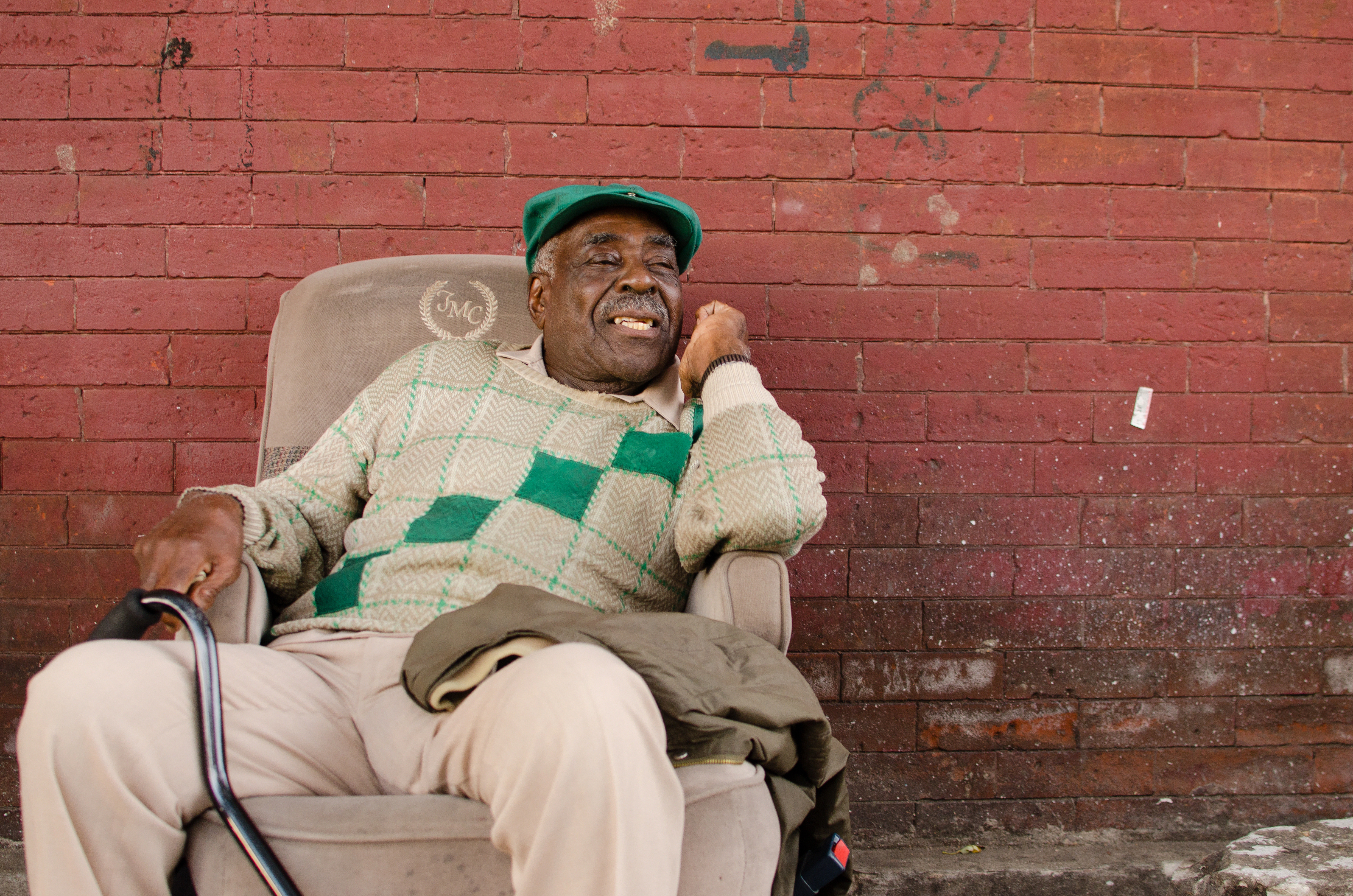
Ireashia: Yeah. That’s pretty similar to how I see it. I think we are in a moment when it’s important–with whatever media, like you said–to make sure we are telling our own stories. And in the way that we want to tell it. We don’t want to leave too much room for interpretation. Because that will always get washed away, or smudged, or distorted in some way. I think a lot of young Black photographers are seeing the value in that–the importance of making sure we document the everyday life of Black people as well as these movements.
Tonika: Yeah, because it’s history. And there’s also a need for–like, an actual need for it. People don’t go to [newspapers] as their sole source of news and information. It was largely media outlets that hired photojournalists who were the ones that documented communities in urban areas. They contract photographers to cover a specific story and so the stories are always negative.
To me it’s like an urgent call for photographers who are passionate about documentation and street photography to really get out there, do the work now. This is the period of time that probably won’t be covered from an insider-perspective, because of the business model of large media outlets who produce newspapers and publications where they are right now. So you’re gonna have a gap in time where you will potentially not have Black communities or communities of color being photographed from people who are empathetic. And I would hate to see that occur.
This is what let me know that I needed to document Englewood and focus on Englewood: I Googled “Englewood, photos, Black Life.” Nothing came up. Nothing. And the only photos that can give people a historical context of communities and urban cities throughout the countries are from photojournalists. And their stuff is archived by larger media outlets because that’s who they worked for. Those are great, historic pieces now. It doesn’t take long for a photo to become a historic piece. All it takes is 15-20 years because stuff changes so quickly. I think it’s an urgent call.

Ireashia: Yeah! I remember being at a woman photography meet-up and there was one white woman photographer who worked at the Chicago Tribune. She was showing work that she had gotten awarded for. And one of the photos was like a photo of a Black man dead, in the grass. I was so triggered. Because I’m like why is this so important to show people [in that way]?
Tonika: Well, I got a whole issue of documentary photography. I just can’t stand it. It speaks to my larger issue with media, in general. When I was teaching photography to youth, I told them: “What you photograph, and how you photograph it, says more about you as a photographer than it does your subject. Period.”
I also hate crime reporting. Everybody grew up knowing “If it bleeds, it leads.” News has literally become reports about crime. It’s so crazy to me that we’ve gotten conditioned that the news is supposed to be a list of all the crime that’s occurred. What I tell people, to help them understand why we collectively have a problem with that–example: People were like, “Oh, Englewood is just so big on really challenging the narrative of their neighborhood that’s being reported on in the news. Why is that so critical?” And so we’re like, it’s not only because [Englewood] is perpetuated in a horrible stereotype and imagery of our community, it’s also eliminating us from an opportunity to be informed citizens of Chicago. Where do we go to get information if the news is just only talking about the crime in our community?
I, specifically, really want to help people understand that there’s a reason we feel the way we feel about the news. And it’s also eliminating us from having the information we need as residents of this city. Access to information is harder to get in neighborhoods of color as a result of the disinvestment. And that part is unfair and it’s basically disenfranchisement.
And…I did just kind of go off on a tangent [Tonika laughs].
Ireashia: No, it’s okay! It makes me wanna know more about R.A.G.E. and the types of programming you all have and what you do, and how you’re working with the city and community folks.
Tonika: Well, we are an association of residents.
Ireashia: Yes.
Tonika: We have about 300 members. And most of them are residents of Englewood or people who grew up in Englewood and no longer live here, who have family here, who go to church here, who go to work here. We have regular bi-monthly village meetings that 80-100 residents come to. We host this event series in the summertime–that’s really youth-focused but it’s intergenerational–called So Fresh Saturdays, where we activate several different parts in Englewood over the Summer, almost like every other week/weekend, with local artists that perform, free food, community resources. We kinda call it our Lil’ Englewood Coachella.
Ireashia: [laughs] I love it.
Tonika: So we do that. But, our primary programming is community engagement around whatever issue our members of the community feel is important. But, unfortunately, R.A.G.E. exists because there was no way for residents in Greater Englewood to be informed about things going on in Englewood. And issues that are relevant to Englewood. There was just no way for people to find out.
Our Englewood village meetings are the general places where we inform the community about whatever issues or information. A lot of organizations that are doing this really important, unsexy work, reach out to us so that they can do their community engagement. But, in turn, it benefits us, because now we can share that with the community. Because we can’t rely on newspapers or our aldermen. No one alderman has a large enough chunk of Englewood to take ownership of communicating with all of Englewood. We gotta do that. Because there’s no other way for us to find out about how to get city services, or how to do basic things. We just wanted to be a space where residents–regardless of what ward or address– could come to get informed.
Ireashia: That’s amazing. That’s such a heavy lift. But, it’s the work of Black women, right? The heart-labor, the emotional labor that you do to create sustainable community-oriented programs that actually inform residents and show young people that, actually, where you live is lit as fuck! [laughs]
Tonika: Yeah, it is! That’s really what So Fresh Saturdays are all about. Because our village people are older people–like, older than 30. Oftentimes when we have people who have never been to a R.A.G.E. village meeting, they’re like: “Oh, we need to have the voice of the youth in these meetings!” We don’t need, nor should we have to, liven it up to engage them when we have a completely different space for them to get engaged–which is So Fresh Saturdays. We have a set environment for youth to get engaged. They shouldn’t have to sit through a two-hour meeting that is probably boring to them when there are other ways they can be engaged to understand and get embedded in what civic engagement and community service looks like without having to sit in a meeting.
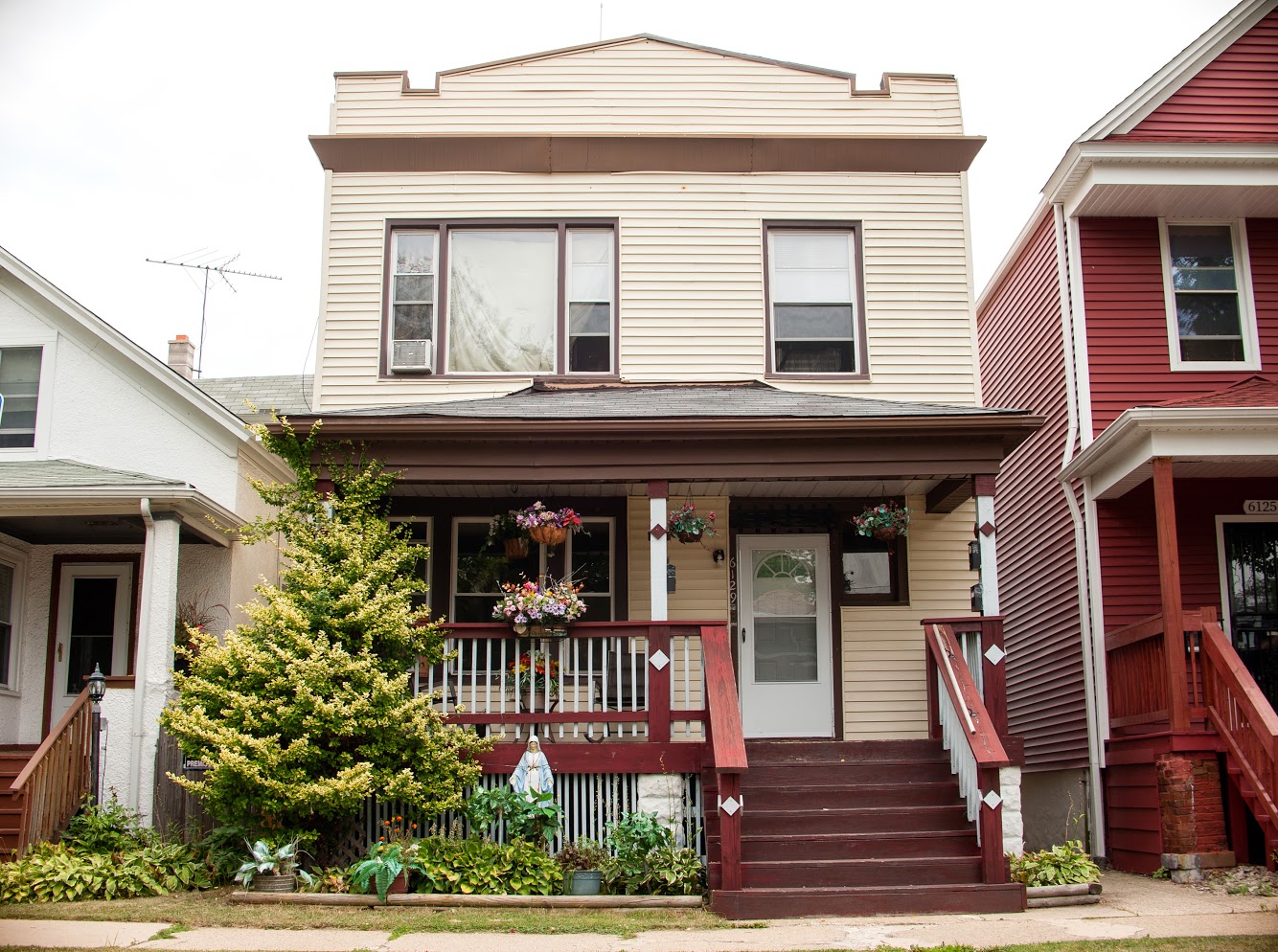
Ireashia: I’m gonna shift to Folded Maps. In many ways, it’s like a call-to-dialogue, right? It’s like an actual–like, ya’ll, look at this! And, talk about it. I’m so enamored by that. Because dialogue is kind of scary.
Tonika: It is. It’s the thing we avoid.
Ireashia: Especially honest communication and open dialogue about all the intricacies of the city, right? As you continue to explore the topic and issue of segregation and structural violence, how have your interviewees responded to your work? What have been some really interesting moments from discussions that stick with you?
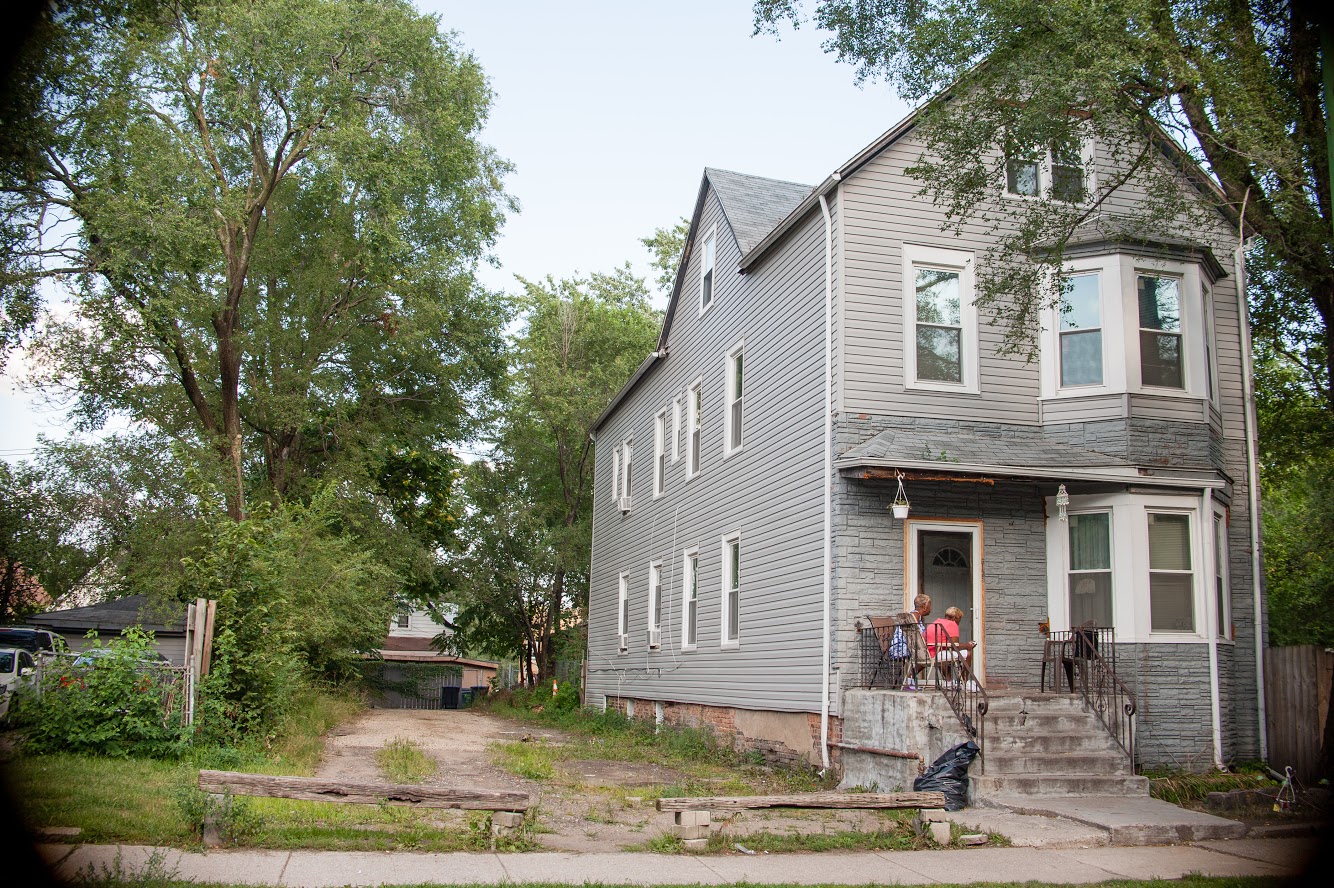
Tonika: Two. Well, three, really. The first is one, me as the artist learning to eliminate myself from the conversation. You know, not interrupting what is said with my reactionary, opinionated response and just letting people have that space whatever it is they want to say in response to the question that I’m asking. So that’s been a lesson in listening. A brutal lesson. Because you have to hear people out.
Two: The question, when I ask them: “How much does your home cost?” “How much did it cost when you moved there?” Because these are residents that either live or grew up on the same street in the different neighborhoods. So that question is where it gets real. And people have their awkward responses and their reactions. Because it is the cutting through the bull result of segregation. Consistently, the South Siders, when they say how much their homes cost–it’s significantly lower than [what] the North Siders are apprehensive to say. Because everyone knows, “Oh this is where it is. This is what creates the divide.”
Ireashia: Hit ’em with the money question.
Tonika: Yeah! When you hear someone say, or when you’re the person saying–”Oh, my house, it was $60,000.” And then the person after that, “Well when I bought it in 2009–” go through the whole run-around– “It was $250.” People just sitting there, like: “Excuse me? What did you just say?” And on the flip side, it’s hard for the North Side resident to say the price.
Ireashia: Why do you think that is?
Tonika: Well, that’s also a part of the discussion. Because they feel bad. One of the resident pairs just came out and said it: “I feel guilty knowing that you don’t have access to the things that I’m so easily-accessible to.” That’s also the answer to saying how much your house cost. Because you tell the answer to people whose neighborhood and home are not nearly valued as high as yours. And that’s uncomfortable.
Also what sticks out to me is just how open people were. That there’s a lot of people really interested in wanting to contribute to help solve this issue of segregation and inequity but just feel like they can’t. For the North Side participants in Folded Map, this was an opportunity for them to do something that they felt was too large of an issue for them to tackle–when they’re not even on the disadvantaged end of it. This was a way for them to have experiential learning and really understand something that they would’ve never been able to understand otherwise. Unless they took their own initiative to come to Englewood–to do what? I don’t know!
It was really like, how do you make the bridge for people to have this conversation? For those that want to.
Ireashia: Right.
Tonika: That is what has been the most revealing and illuminating for me is to know that people on both sides of the city–even the West Side–are impacted by this. And it’s people on all of these sides who want to work together or want to address this issue. But, because of segregation, they don’t have a gathering space to discuss it because our city makes it literally so difficult–just by the geographic set up–to do that. Who is gonna wanna go 18 miles north just to talk to somebody about segregation? Who is gonna wanna come to Englewood when they’ve been told don’t?
There needs to be spaces to have these conversations so that the people who want to have them can do so. Folded Map showed me that it’s people all over who want to work towards this. And that’s what sticks with me. I did not think that before doing Folded Map.
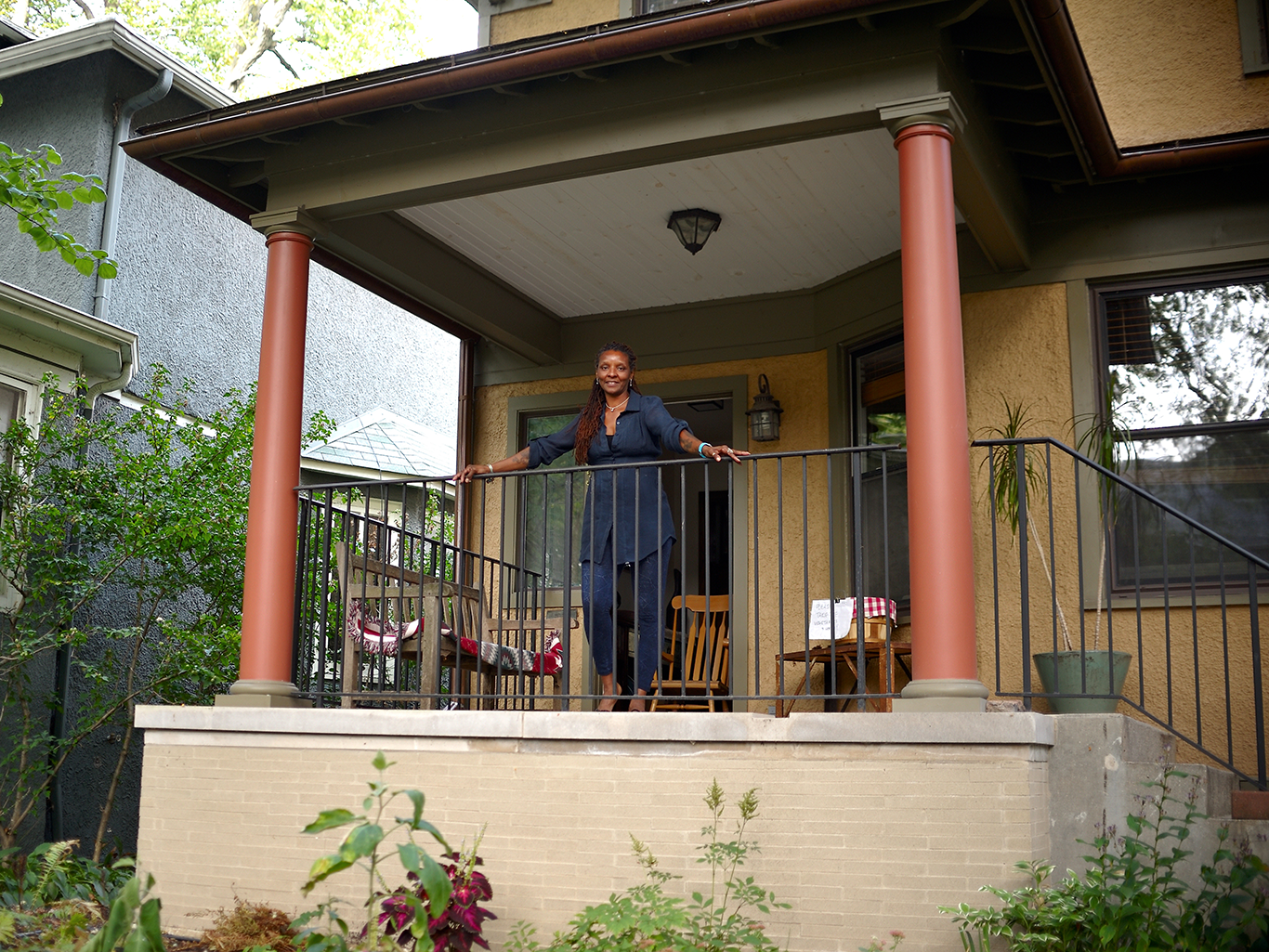
Ireashia: You do something really interesting in Folded Map. There are two portraits. One of a Black woman on a porch at a White man’s house, right? Then, one of the same White man at her house. And I’m reading the cards of each portrait and I’m like, “Wait, that’s not her house.” When I read those photos, I was like, “Okay, girl, get your money!” And then when I saw him, I was like, “gentrifier.” You know?
Tonika: Yeah. Mhmm.
Ireashia: I feel like that was trickster energy you put in there. And I really appreciate it, because you have to really look and really read. And you put a lot of onus on the audience to question their own perceptions of how they read these two photographs. I was like, “Wow! Okay.”
Tonika: You said it better than I described it to the curator! See, that’s why I have to have you to write that down for me. [laughs] The curator knew that I had those photos. And I told her: “I have to have them in the show!” Because I want the audience, whether or not they admit to it, I want them to look at these photos and make the snap judgments that Chicago forces you to make based off of the facts! And do their own stereotyping so they can understand how the environment of Chicago informs your judgment more so than your own personal objectivity. And to place the impact of Chicago’s segregation and geography on a larger scale for people to understand that segregation does more than impact our day-to-day lives. It makes us judge people. Chicago is so unique in that it makes us judge people in specific ways that transplants don’t. What made me know that I had to include this in the exhibit–because that was my intention when I took the photo–to play with stereotypes. When I showed it to my friends, they had the same exact response. How they questioned her–or applauded her–and how they questioned Wade, the White guy. My friend was like: “Why you take a picture of the landlord?” [Tonika and Ireashia laugh together]
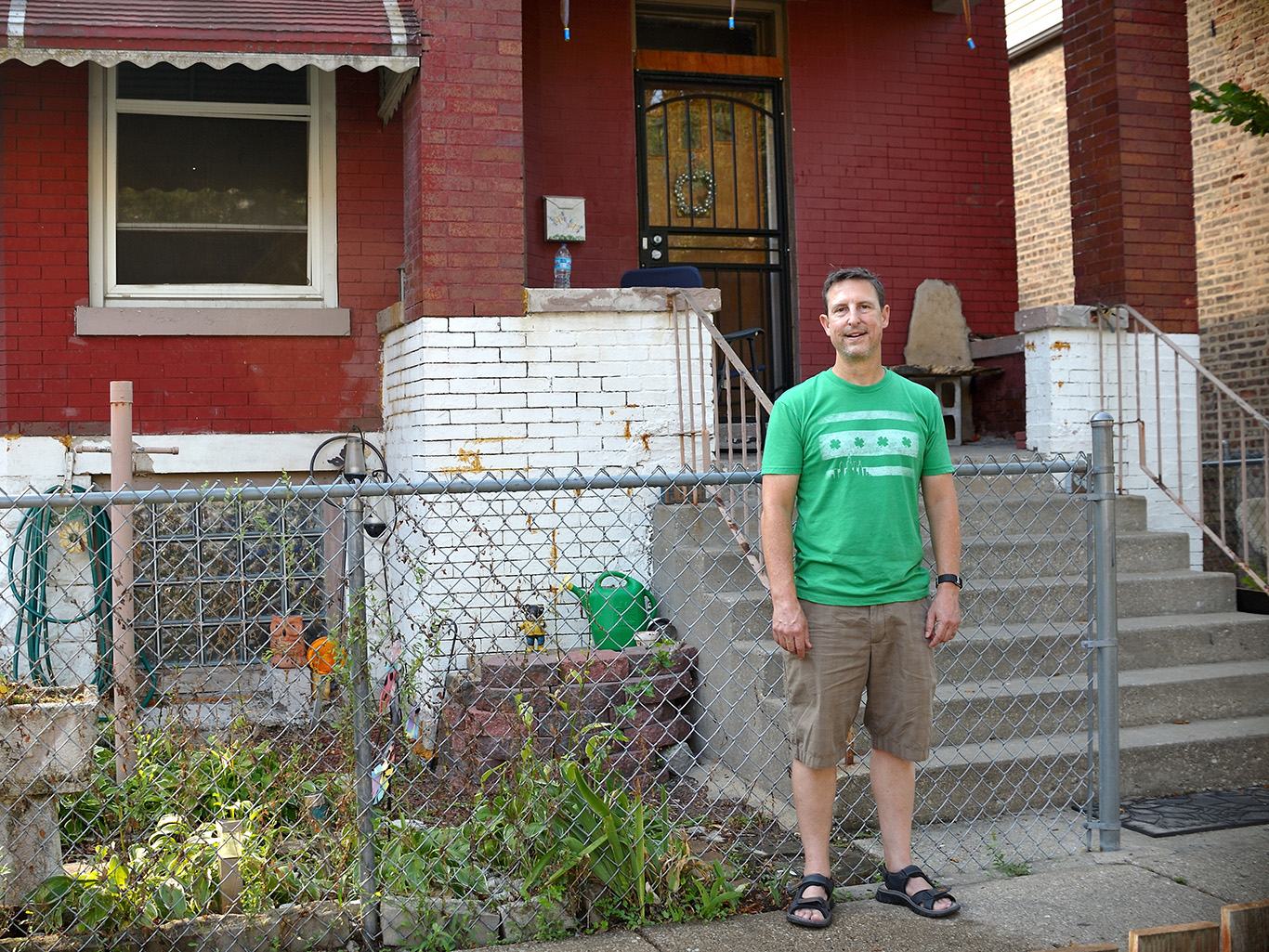
Ireashia: Nooo! Yo, that’s spot on, though.
Tonika: That says a lot about the power dynamic in Chicago. There is no neighborhood in Chicago where a middle-aged White man that have homes that look “run down” to other people. And if it is his house we know that it’s something that he rents out–he’s a developer or there’s something he’s fixing up. Right? And for Nanette, the response was, “What she do for a living?” [laughs] And so the ways in which we validate her or question or– we didn’t wanna know what Wade did for a living.
Ireashia: We kinda knew.
Tonika: Exactly! What you know. So the curator agreed to include that little something different in the exhibit.
Ireashia: It definitely added depth–it really brought it home for me. Because I have been in Chicago for seven years, and I have never been so judgemental.
Tonika: Chicago do that! It definitely gets you that way, especially when you start identifying people by the neighborhood that they from. Someone say Bronzeville, “Oh that nigga got money!” But, whereas ten years ago you’d probably be like “hmm…I don’t know.” Whenever I say Englewood I always get some kind of response. It’s just like… the neighborhoods determine how you choose to connect with somebody or what questions you ask them. It really informs a lot. That’s very unique to Chicago.
Ireashia: And it’s very class-based.
Tonika: Yeah. Race and class. Chicago is the perfect experiment for how race and class play out. How you connect with people. How you judge people. How you make assumptions about people. It’s the perfect environment to do something like Folded Map because it doesn’t–it exists in other places, but not so mathematical.
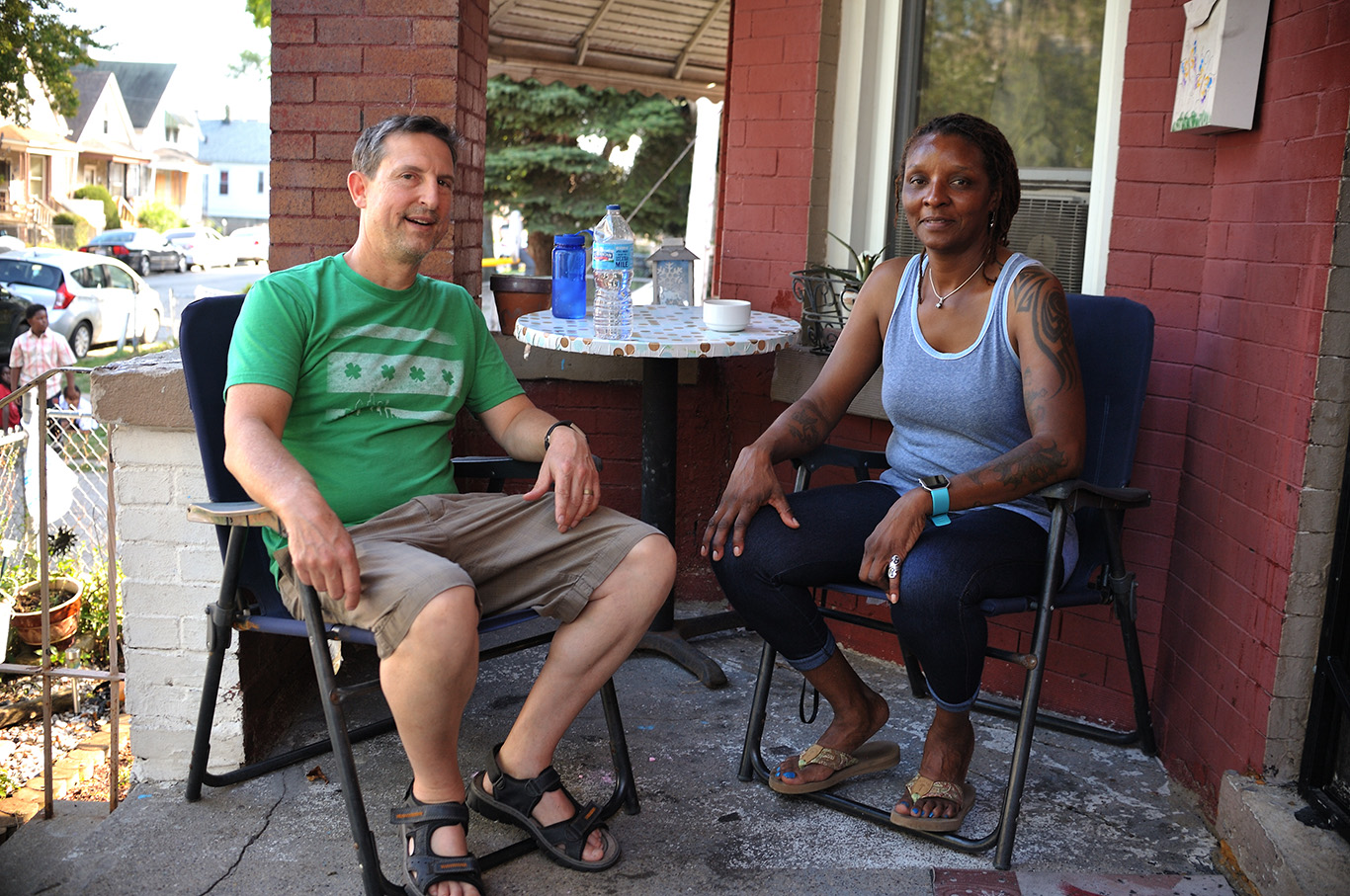
Ireashia: What are the next steps for Folded Map?
Tonika: I don’t have another location for where Folded Map will be after it leaves LUMA. I definitely wanna create a website so that it has a permanent home. I also want to create some curriculum around it. The response to [Folded Maps] helps me to envision a future for it. I had no idea that a lot of people all over the city would be ready to have this conversation or interested in engaging with it. So many students from grammar school to collegiate-level have seen Folded Map and responded to it. I definitely want to do that because I want to continue to do Map Twin interviews and I want it to be a tool to see how these two individuals–or four–through Folded Map, was guided through having conversations that we generally avoid. Eventually, I want to be able to host Folded Map dinners to invite people to a specific neighborhood to meet their geographic neighborhood twin. But, in a more communal way.
Ireashia: Keep me updated!
Tonika: I will.
Folded Map runs through October 20 at the Loyola University Museum of Art.
This article is published as part of Envisioning Justice, a 19-month initiative presented by Illinois Humanities that looks into how Chicagoans and Chicago artists respond to the impact of incarceration in local communities and how the arts and humanities are used to devise strategies for lessening this impact.
Featured Image: Portrait collage of Tonika G. Johnson smiling at the camera. She is adorned with silver hooped earrings and a multi-colored head wrap tied in a top-knot. The background is purple with a satellite map of Englewood; above the map is a transparent text that reads: “Englewood Times.” The portrait and the collage were created by Ireashia Monét.
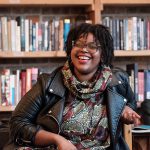
Ireashia Monét (they/them) is a Chicago-based self-taught photographer, filmmaker, writer, and multimedia artist originally from PG County, MD.
